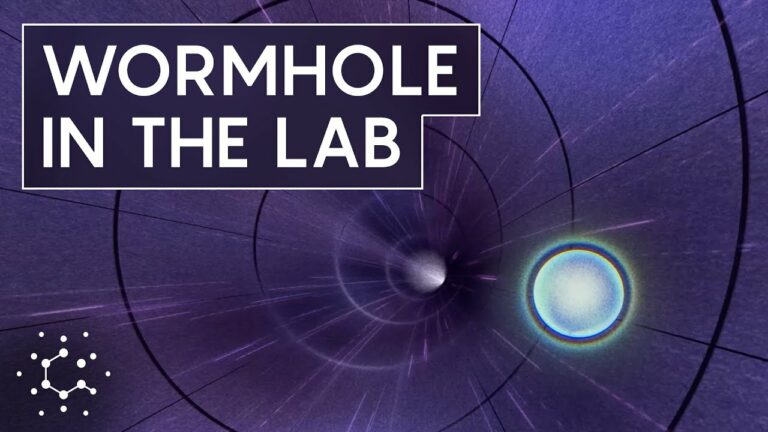Physicists Created a Wormhole in a Quantum Computer
The unprecedented experiment explores the possibility that space-time somehow emerges from quantum information, even as the work’s interpretation remains disputed.
Researchers were able to send a signal through the open wormhole, though it’s not clear in what sense the wormhole can be said to exist.
Media error: Format(s) not supported or source(s) not found
Download File: https://d2r55xnwy6nx47.cloudfront.net/uploads/2022/11/Wormhole-byIbrahimRayintakath_RuiBraz-Lede.mp4?_=1The first wormhole, a form of tunnel Albert Einstein and Nathan Rosen believed would connect two points by travelling through an additional dimension of space, has allegedly been made by physicists.
Quantum bits of information, or “qubits,” packed in minuscule superconducting circuits gave rise to the wormhole like a hologram. Then, the scientists transferred data via the wormhole by modifying the qubits, as they reported today in the journal Nature.
The group, lead by Maria Spiropulu of the California Institute of Technology, utilized Google’s quantum computer, known as Sycamore, located at Google Quantum AI in Santa Barbara, California, to put the unique “wormhole teleportation protocol” into practice. Spiropulu and her team defeated a rival team of physicists who wanted to use IBM and Quantinuum’s quantum computers to perform wormhole teleportation with this first-of-its-kind “quantum gravity experiment on a chip.”
Spiropulu added, “I was shaken” when she observed the key signature showing qubits were traveling through the wormhole.
The experiment can be viewed as supporting the holographic principle, a broad theory about how the two cornerstones of fundamental physics, general relativity and quantum mechanics, fit together. Since the 1930s, physicists have worked to bring these two contradictory ideas — one a guide for atoms and subatomic particles, the other Einstein’s explanation of how matter and energy bend space-time to produce gravity — into harmony. The holographic principle, which has gained popularity during the 1990s, postulates that the two frames are mathematically equivalent or “dual.” It asserts that the wavy space-time continuum that general relativity describes is actually a quantum system of particles. Quantum processes cause space-time and gravity to appear, much as how a 3D hologram appears from a 2D pattern.
In fact, the new experiment supports the possibility that wormholes can form as a result of quantum phenomena of the kind that we can control in a quantum computer. According to John Preskill, a theoretical physicist at Caltech who was not engaged in the experiment, the dynamic system of qubits in the Sycamore chip “has this very fascinating alternative description.” “You may conceive of the system as gravitational in a totally different language.”
To be clear, the wormhole is not something we can see, unlike a regular hologram. It’s not a part of the same world that humans and the Sycamore computer live in, despite the fact that it may be seen as “a strand of actual space-time,” according to co-author and chief creator of the wormhole teleportation protocol Daniel Jafferis of Harvard University. The wormhole and qubit realities are said to be alternative manifestations of the same physics according to the holographic principle, although it is yet unclear how to understand this form of duality.
Regarding the basic ramifications of the outcome, opinions will diverge. The holographic wormhole in the experiment, which is crucial, is made of a kind of space-time distinct from the space-time of our own universe. Whether the experiment supports the idea that the space-time that we live in is likewise holographic and is patterned by quantum bits is up for debate.
According to Jafferis, “I think it is accurate that gravity in our world emerges from certain quantum [bits] in the same manner that this small baby one-dimensional wormhole emerges” from the Sycamore chip. Of course, we cannot be certain of that. We’re attempting to comprehend it.
Do not forget to share your opinion with us to provide you with the best posts !




0 Comments